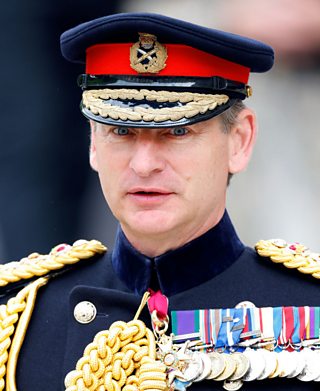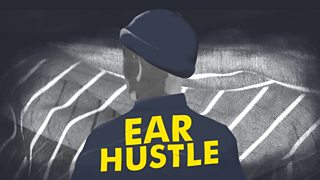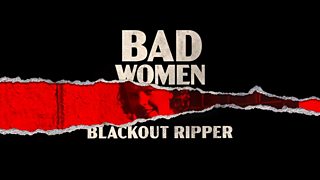The SAS Murders – and the conspiracy to cover them up
The SAS. Alleged war crimes. And an almighty cover-up.
From the expert research of The Sunday Times’ Insight Team comes extraordinary podcast The Story, lifting the lid on the activities of the SAS during Britain’s involvement in the Afghan war in the 2010s.
Their incredible journalism brings in evidence from some of the most senior officers in the special forces, including a whistleblower by the codename N1466.
Over two gripping episodes, hear how The Sunday Times investigative double act, Insight Team editor Jonathan Calvert and deputy George Arbuthnott found a crack and kept digging, right into the heart of government.
With 6,000 secret documents released and a vast inquiry well under way, discover the shocking story of a “cancerous” SAS unit and an alleged deliberate attempt to cover over their misdeeds.
The Story has been acquired by the ´óÏó´«Ã½. It is not complied by ´óÏó´«Ã½ Editorial Standards but covered by the Ofcom Broadcasting Code.
A unit gone rogue
Between 2009 and 2013, British special forces were active across Afghanistan, briefed to weed out Taliban insurgents who posed an acute threat.

Central to this mission, the Special Air Service [SAS] employed a relentless campaign of night raids, killing hundreds on their quest to restore peace to the war-torn nation.
But now, thanks to the dogged determination of N1466 and The Sunday Times, damning evidence suggests that not only were many of these killings unavoidable, they were in fact war crimes.
“By February 2011, N1466 and other senior commanders had become extremely concerned,” Calvert explains on The Story. “It had gone beyond cavalier and careless. For one particular squad, their reports showed large numbers of citizens that had been killed rather than captured.”
The concerns reached the top of Afghan society, president Hamid Karzai intervening after the shooting of Mohammed Ibrahim, a civilian former district governor.
The mission log claimed he had grabbed a grenade after being taken into his home at gunpoint to help soldiers search his premises.
This was just one of many suspicious incidents involving the SAS unit, N1466 believing the numbers dying on raids to be “disproportionate” and “out of control”.
“This officer was overseeing all special forces operations at the time and he whistle-blew to royal military police, saying ‘a cancer had infected a rogue SAS squadron who had murdered dozens of unarmed detainees,” Arthurnott of The Sunday Times explains.
“He came forward despite the risk because their crimes were so serious.”
At the time, the chief of staff for Major General Jacko Page (then director of special forces) received an email from another worried officer questioning the credibility of the SAS accounts and he seemed to agree, writing: “If we don’t believe this, then no one else will and when the next WikiLeaks occurs, then we will be dragged down with them.”
As Arthurnott adds, “Further emails between special forces commanders at the Directorate in London which stop calling the unit’s victims EKIA (Enemy Killed In Action) and are now called EJK (Extrajudicial Killings).
“In other words, murder.”
A story kept quiet
Documents released as part of the inquiry have revealed those at the highest level of special forces were aware of the complaints against SAS activities.

And it goes further.
Head of the naval equivalent of the SAS, the Special Boat Services [SBS], Gwyn Jenkins was told in March 2011 that soldiers had confessed to operating a “deliberate policy of executing all fighting age males” and that weapons were subsequently planted by their bodies to imply their aggression.
Jenkins informed Page but the director of special forces ordered an internal review rather than involve the military police.
“It only took a week,” explains Arthurnott, “and the final report was officially authored by the overall commander of the rogue squad.
“We found that quite astonishing that the man in charge of the squad was doing the review. I had to read it four times to make sure I had understood.
“Unsurprisingly, he accepted the killings were in self-defence.”
Jenkins accepted the SAS review and placed the confession he had seen in a safe as SBS headquarters. It was not seen for three more years.
N1466 had risked his life and family to expose these events, something highly unusual as Calvert explains.
“He is a military man and left it to General Page,” Calvert says. “It is not normal to have whistleblowers, especially commanders at his level.
“He later told the police in a witness statement, ‘I should have made it clear to Page the issue should have been taken to the service police’.”
As for Jenkins? He has recently been appointed as national security adviser for the Prime Minister.
So, what next?
With the evidence gathering dust in a safe, the SAS continued to operate in Afghanistan until British forces left in 2013 – with no one ever held to account for their actions.
That was 11 years ago, and it has taken bravery, determination and resilience – including N1466 risking his own family’s safety – to keep fighting for justice.
As the military police eventually got involved, and evidence suggests those at the top of government found out about this, The Sunday Times team continued to search for the truth.
An ongoing inquiry, now not expected to end until 2025 at the earliest, is just part of that process.
In response to the reporting, a Ministry of Defence spokeswoman said: “It is not appropriate for us to comment on allegations which may be within scope of the statutory enquiry”.
The Sunday Times also contacted the civil servants and soldiers mentioned in the podcast but most declined to comment.
For the extraordinary full story, listen now to episode one and episode two on ´óÏó´«Ã½ Sounds.
-
![]()
Ear Hustle
A raw, often funny, and always surprising peek into the reality of life inside prison.
-
![]()
Bad Women
The extraordinary stories of the victims of wartime London's Blackout Ripper.
-
![]()
The Allusionist
An entertainment show about how language works and why we should care.
-
![]()
No Such Thing As A Fish
An award-winning podcast from the QI offices. The researchers behind the hit ´óÏó´«Ã½ show gather round the mics to discuss the most extraordinary and entertaining facts they’ve found this week.





